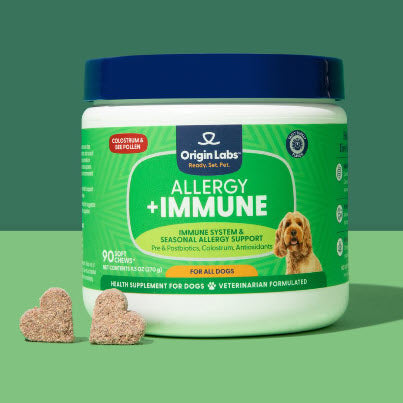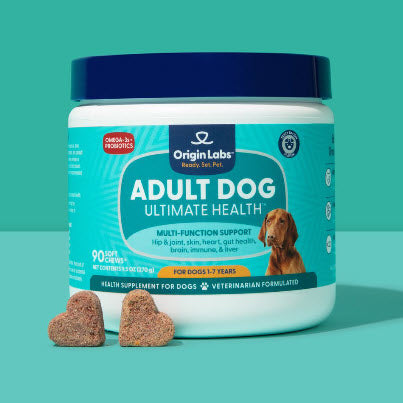Can Dogs Eat Pork Rinds? A Comprehensive Guide
When it comes to sharing snacks with our furry friends, many dog owners wonder, can dogs eat pork rinds? While pork rinds might be a tasty treat for humans, they are not suitable for dogs. This article will delve into the reasons why pork rinds pose health risks for dogs and provide safer, more nutritious alternatives.
Brief Explanation of the Topic
Pork rinds are deep-fried pig skin that is often sold as a crunchy snack. They are typically seasoned with salt and various spices to enhance their flavor. While they may be an appealing snack for people, these same characteristics make pork rinds unsuitable for canine consumption.
Key Points to Consider
- High Fat Content: Pork rinds are high in fat, which can lead to digestive issues and pancreatitis in dogs.
- Sodium Levels: The high sodium content in pork rinds can cause salt poisoning in dogs, leading to symptoms such as vomiting, diarrhea, and even seizures.
- Seasonings: Many pork rinds contain harmful seasonings like garlic and onion powder, which are toxic to dogs.
Alternative Treat Options
Instead of giving your dog pork rinds, consider offering healthier treats that cater specifically to their dietary needs:
- Dog-Specific Treats: Look for treats formulated for dogs that provide balanced nutrition without harmful ingredients.
- Natural Snacks: Carrots, apple slices (without seeds), and green beans are excellent low-calorie options that most dogs enjoy.
For more information on maintaining your dog's health with appropriate supplements and treats, you can explore Adult Dog Food, Health Supplement designed specifically for adult dogs or consider Best Puppy Health Supplements formulated to support the health of growing puppies.
Understanding Your Dog's Nutritional Needs
Every dog owner wants their furry friend to live a long and healthy life. The dietary requirements of dogs play a crucial role in achieving this goal. Just like humans, dogs need a balanced diet to thrive.
Overview of a Dog's Dietary Needs
Macronutrients
- Proteins: Essential for muscle development and repair. High-quality sources include meat, fish, and eggs.
- Fats: Necessary for energy and the absorption of fat-soluble vitamins. Healthy fats can be found in fish oil and flaxseed.
- Carbohydrates: Provide energy but should be given in moderation to avoid weight gain. Sources include grains, fruits, and vegetables.
Micronutrients
- Vitamins: Vital for immune function, vision, blood clotting, and more. Vitamins A, D, E, and K are especially important.
- Minerals: Required for bone health, nerve function, and enzyme activities. Key minerals include calcium, phosphorus, and potassium.
Importance of Providing Balanced Nutrition for Dogs
A balanced diet ensures that your dog receives all the necessary nutrients to maintain optimal health. The risks of an unbalanced diet include:
- Nutrient Deficiencies: Lack of essential vitamins and minerals can lead to health issues such as weak bones or skin problems.
- Obesity: Excessive caloric intake leads to weight gain, increasing the risk of diabetes and heart disease.
- Poor Coat Condition: Inadequate nutrition can result in a dull coat and excessive shedding.
The Role of Treats in a Dog's Diet
Treats can serve multiple purposes in a dog's diet:
- Training Rewards: Positive reinforcement during training sessions.
- Dental Health: Some treats are formulated to help clean teeth and reduce plaque buildup.
- Bonding Time: Sharing treats can strengthen the bond between pet and owner.
However, it's essential to remember that treats should not make up more than 10% of your dog’s daily caloric intake. Overindulgence in treats can lead to nutritional imbalances and obesity.
When selecting treats, opt for those that complement your dog's dietary needs rather than detracting from them. Healthy alternatives like carrot sticks or specially formulated dog treats are excellent options.
Examining the Composition of Pork Rinds
What Are Pork Rinds?
Pork rinds, also known as pork cracklings or chicharrones, are a popular snack made from the skin of pigs. These dehydrated pork products undergo a cooking process where the skin is first boiled and then deep-fried until it becomes crispy. This results in a light, airy texture that many people find appealing.
Common Ingredients Found in Pork Rinds
The primary ingredient in pork rinds is pig skin, but several other components contribute to their flavor and preservation:
- Salt: Used to enhance taste and act as a preservative.
- Oil: Often used for frying, contributing to the high-fat content.
- Spicy-flavored seasonings: Many commercial pork rinds include seasonings such as paprika, cayenne pepper, or chili powder for added flavor.
- Preservatives: Ingredients like BHA (Butylated hydroxyanisole) and BHT (Butylated hydroxytoluene) are commonly added to extend shelf life.
- Flavor enhancers: Monosodium glutamate (MSG) is frequently included to amplify the savory taste.
Some variations of pork rinds might also contain:
- Onion powder
- Garlic powder
- Sugar
While these ingredients make pork rinds a tasty treat for humans, they pose significant risks for dogs. The high fat and sodium levels can lead to severe health issues such as pancreatitis and salt poisoning. Additionally, seasonings like onions and garlic are toxic to dogs.
Examining the composition highlights why pork rinds should be kept out of your dog's diet. The combination of unhealthy fats, excessive salt, and potentially harmful seasonings makes them an unsuitable choice for canine consumption.
The Dangers of Feeding Pork Rinds to Dogs
Feeding pork rinds to dogs poses several significant risks. Although these crispy snacks may be a delight for humans, they can have detrimental effects on your dog's health.
Risks Associated with Feeding Pork Rinds to Dogs
Pork rinds are not only unhealthy but also potentially hazardous for dogs. The primary concerns revolve around their high fat and sodium content, which can lead to severe health issues such as pancreatitis and salt poisoning. Additionally, the seasonings used in pork rinds often include ingredients that are toxic to dogs.
Potential Link Between Pancreatitis and High-Fat Diets Like Pork Rinds
Pancreatitis is a condition characterized by inflammation of the pancreas. This organ plays a crucial role in digestion and blood sugar regulation. A diet high in fat can trigger pancreatitis in dogs, leading to symptoms such as:
- Vomiting
- Diarrhea
- Abdominal pain
- Loss of appetite
- Lethargy
Pork rinds are exceptionally high in fat, making them a significant risk factor for this painful and potentially life-threatening condition.
Sodium Content in Pork Rinds and the Risk of Salt Poisoning in Dogs
Salt poisoning, or hypernatremia, occurs when a dog ingests an excessive amount of sodium. The sodium content in pork rinds is typically very high, which can lead to salt poisoning if consumed by dogs. Symptoms of salt poisoning include:
- Vomiting
- Diarrhea
- Tremors
- Seizures
- Coma
Dogs have much lower tolerance levels for sodium compared to humans, making even small quantities of salty foods like pork rinds dangerous.
Connection Between Obesity and Excessive Consumption of High-Calorie Snacks Like Pork Rinds
Obesity is another significant concern when feeding dogs high-calorie snacks such as pork rinds. Obesity can lead to various health problems including:
- Diabetes
- Heart disease
- Joint issues
- Decreased lifespan
Pork rinds are calorie-dense with little nutritional value, contributing to weight gain and associated health risks if fed regularly.
Toxicity Risks Associated with Onions and Garlic Commonly Found in Some Pork Rind Seasonings
Some pork rinds come seasoned with onions and garlic, both of which are toxic foods for dogs. Even small amounts can cause serious health issues such as:
- Hemolytic anemia (destruction of red blood cells)
- Gastrointestinal upset
- Weakness
- Lethargy
It's essential to check the ingredients list on any human snack before considering sharing it with your pet.
Given these risks, it's clear that pork rinds are not a suitable treat for dogs. Ensuring your dog’s diet is free from harmful foods like these will help maintain their overall health and well-being.
Can Dogs Have Pork Rind Alternatives?
When looking for pork rind alternatives for your dog, it's important to focus on treats that are both safe and nutritious. Here are some healthy options that can satisfy your dog's cravings without compromising their well-being:
Safe and Healthy Alternatives
- Dehydrated Sweet Potatoes: These are rich in vitamins and provide a chewy texture similar to pork rinds. They are low in fat and can be easily made at home.
- Carrot Sticks: A crunchy and low-calorie treat that is excellent for dental health. Carrots are high in fiber and vitamin A.
- Apples : Remove the seeds and core before offering apples to your dog. They provide a sweet, crunchy treat packed with vitamins.
- Green Beans: Fresh or steamed green beans are low in calories but high in fiber, making them an ideal snack.
- Commercial Dog Treats: Look for high-quality treats made from natural ingredients without added preservatives, salt, or sugar. Brands like Blue Buffalo, Wellness, and Zuke's offer a variety of options.
- Homemade Dog Treats: Baking your own dog treats allows you to control the ingredients. Recipes often include wholesome ingredients like oats, peanut butter (without xylitol), and pumpkin.
Each alternative offers distinct benefits while avoiding the high fat and sodium content found in pork rinds. Make sure any new treat aligns with your dog's dietary needs and consult your vet if you're unsure about introducing something new.
Moderation is Key
When it comes to introducing new foods or treats to your dog's diet, it's important to remember that moderation is key. This means:
- Offering new treats in small amounts
- Paying attention to how your dog reacts to them
- Making sure they don't replace the nutrition from regular meals
Why is Moderation Important?
- Monitoring Reactions: Introducing new foods gradually helps you keep an eye out for any adverse reactions or allergies your dog may have.
- Preventing Health Issues: Certain snacks, like pork rinds, can be high in fat and sodium. Feeding them in large quantities can lead to problems like pancreatitis, salt poisoning, and obesity.
- Balancing Nutrition: While treats can be a fun addition to your dog's diet, they should never replace the essential nutrients they get from their main meals.
Best Practices for Introducing New Treats
Here are some tips to follow when introducing new treats to your dog:
- Start Small: Offer a tiny piece of the new treat and observe your dog for any signs of discomfort or allergic reactions.
- Monitor Health: Watch for symptoms such as vomiting, diarrhea, or lethargy, which might indicate that the treat isn't suitable.
- Consult Your Vet: Before adding any new substantial item to your dog's diet, it's always a good idea to get professional advice from your veterinarian.
Remember, moderation is not only important for potentially risky treats like pork rinds but also for any new addition to your dog's diet. This careful approach ensures the health and happiness of your furry friend while allowing occasional indulgences safely.
Conclusion
Dogs often can't resist begging for a taste of your snacks, but it's best to avoid sharing pork rinds with them. The high fat, sodium, and potential toxicity risks make pork rinds a poor choice for their overall health and well-being.
Key Takeaways
- Pork rinds are high in fat and can lead to health issues like pancreatitis.
- The sodium content in pork rinds poses a risk of salt poisoning.
- Seasonings such as onions and garlic contain compounds that are toxic to dogs.
Instead, opt for specially formulated dog treats made with safe ingredients designed to meet their dietary needs. These treats ensure that your canine companion receives the proper nutrition without the harmful side effects associated with human snacks.
Always consult with your veterinarian if you have any concerns or questions about your dog's diet. Prioritizing their nutritional health helps ensure they live a long and happy life by your side.
By making informed choices, you contribute positively to your dog's overall health, keeping them vibrant and healthy.
FAQs (Frequently Asked Questions)
Can dogs eat pork rinds?
Key Takeaway: While pork rinds may be enjoyed by humans, they are not a safe or healthy snack for dogs. In this article, we will explore the reasons why and provide alternative treat options that you can offer to your canine companion.
What are the dangers of feeding pork rinds to dogs?
Risks associated with feeding pork rinds to dogs include the potential link between pancreatitis and high-fat diets like pork rinds, sodium content in pork rinds and the risk of salt poisoning in dogs, the connection between obesity and excessive consumption of high-calorie snacks like pork rinds, and toxicity risks associated with onions and garlic commonly found in some pork rind seasonings.
Can dogs have pork rind alternatives?
There are safe and healthy alternatives to traditional pork rinds for dogs. It's best to avoid sharing traditional pork rinds with them and opt for specially formulated dog treats that are made with safe ingredients and designed to meet their dietary needs.
What is the importance of moderation when it comes to introducing new foods or treats to dogs?
The importance of moderation when introducing new foods or treats to dogs cannot be overstated. It's crucial to prioritize their nutritional health by ensuring that they do not consume excessive amounts of high-fat, high-calorie snacks like pork rinds.
What is the role of treats in a dog's diet?
Treats play a significant role in a dog's diet, and it is important to provide balanced nutrition for dogs. Instead of offering them pork rinds, opt for safe and healthy alternative treat options that are specifically designed to meet their dietary needs.
As much as your dog may beg for a taste of your pork rinds, can they eat them safely?
It's best to avoid sharing this snack with them as the high fat, sodium, and potential toxicity risks make it a poor choice for their overall health and well-being. Instead, prioritize their nutritional health by opting for specially formulated dog treats made with safe ingredients.








